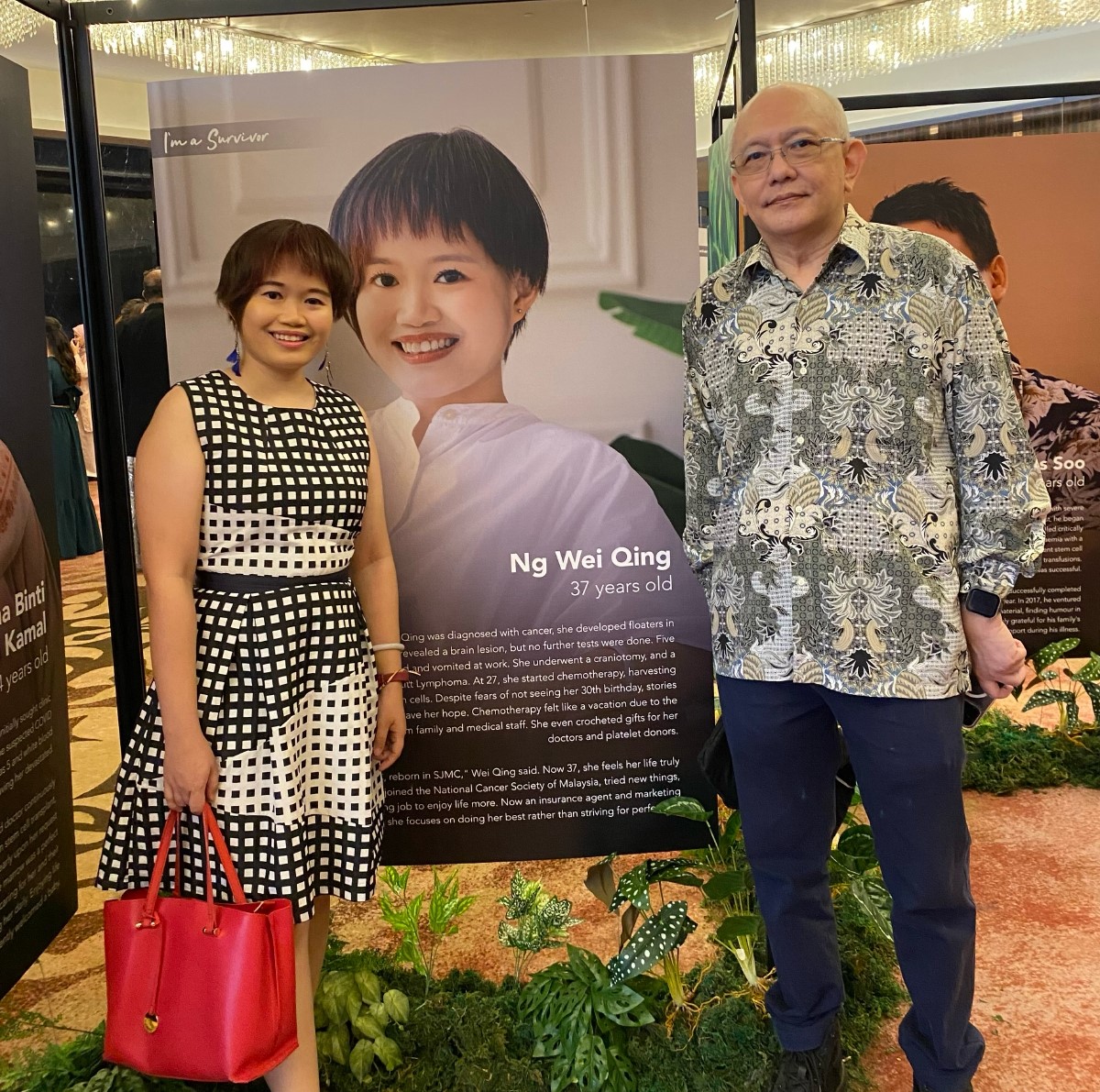
Ng Wei Qing (left) with Dr Alan Teh.
When she was 27, former actuary Ng Wei Qing was diagnosed with Burkitt lymphoma. This is a cancer of the lymphatic system, a part of the body’s immune system which balances body fluid levels and defends against infections.
Her treatment involved an autologous bone marrow transplant: this procedure infuses a patient’s body with their own healthy bone marrow cells. It aims to restore the body’s ability to create normal blood cells after high-dose chemotherapy or radiation.
The procedure was carried out by Subang Jaya Medical Centre consultant haematologist Dr Alan Teh Kee Hean. It was a success, and today, 10 years on, Ng lives a full and healthy life.
"When I was first diagnosed, I was scared I wouldn’t live past my 30th birthday," Ng told FMT Lifestyle. "But now, I consider myself to have two birthdays. My regular one, and the day I had this treatment."
First conducted here in 1987, bone marrow transplants are now a common procedure in the local medical landscape. They are often conducted in cases of blood cancer, often when chemotherapy or radiation treatment ends up permanently damaging or destroying bone marrow cells, which are responsible for creating new blood cells.
"If you’ve been advised to have a transplant, take time to understand what it totally involves. Understand both the short- and long-term effects, the risks and benefits. Go in with both eyes open," Teh told FMT Lifestyle.
Transplant risks rely on many factors, including the disease or condition that sparked the need for a transplant, the type of transplant, and a patient’s age and overall health.
There are two kinds of blood marrow transplants: autologous transplants, as in Ng’s case, which use the transplant patient’s blood-forming cells, and allogeneic transplants, where the cells come from another person.
Donors are often members of a patient’s family: the chance of finding a match in a sibling is about one in four.
There is also the option of finding help through a volunteer donor registry: according to Teh the Malaysian registry has only about 30,000 potential donors registered.
For children, cord blood, which is blood left in the umbilical cord and placenta after birth, is also an option.
“In more recent times, we are able to do transplants with half-matched donors. Thanks to improved techniques in conditioning and medication, the pool of eligible donors has considerably widened.
"Patients are even able to receive transplants from partially matched family members. These are known as haploidentical transplants," Teh said.
A bone marrow transplant usually involves an intravenous catheter being inserted into a vein in a patient’s chest or neck, which is utilised to infuse a patient’s body with the requisite stem cells and medication. The process also involves high amounts of chemotherapy.
During this infusion, new stem cells travel through the patient’s blood to his or her bone marrow: eventually, multiplying and creating new, healthy blood cells. This process is called engraftment.
It might take several weeks before the quantity of blood cells in the patient’s body returns to the standard range: during this period, it is common to experience nausea and diarrhoea. Ng said she became very sensitive to taste: smelling or consuming many distinct tastes would make her vomit.
During this time, it is common for doctors or specialists to prescribe nutrition and painkillers, often in the form of patches. While the transplant procedure occasionally results in side effects, these are mostly reversible.
"I recommend going to support groups. Being able to talk to people, who have been through the same experiences as you, is truly helpful," said Ng.
Teh said bone marrow transplants are now an established part of haematology and is covered by most insurance plans. Before 1993, patients had to travel overseas for these: now, the treatments are available here.
Even after the transplant, patients must still conduct follow-ups: Ng is vigilant about her annual check-up with Teh. Fortunately, relapses after transplants are rare, and patients are usually considered cured after five years of not showing symptoms.
"Transplants have come a long way since they were first conducted. There have been many improvements in safety, efficacy and supportive care, as well as methods in handling transplant complications," Teh concluded.
"It is easy to get informed and misinformed on the internet, so don’t believe everything you read. If you have any concerns about the procedure, please consult your doctors and treatment specialists."
Source: Free Malaysia Today
